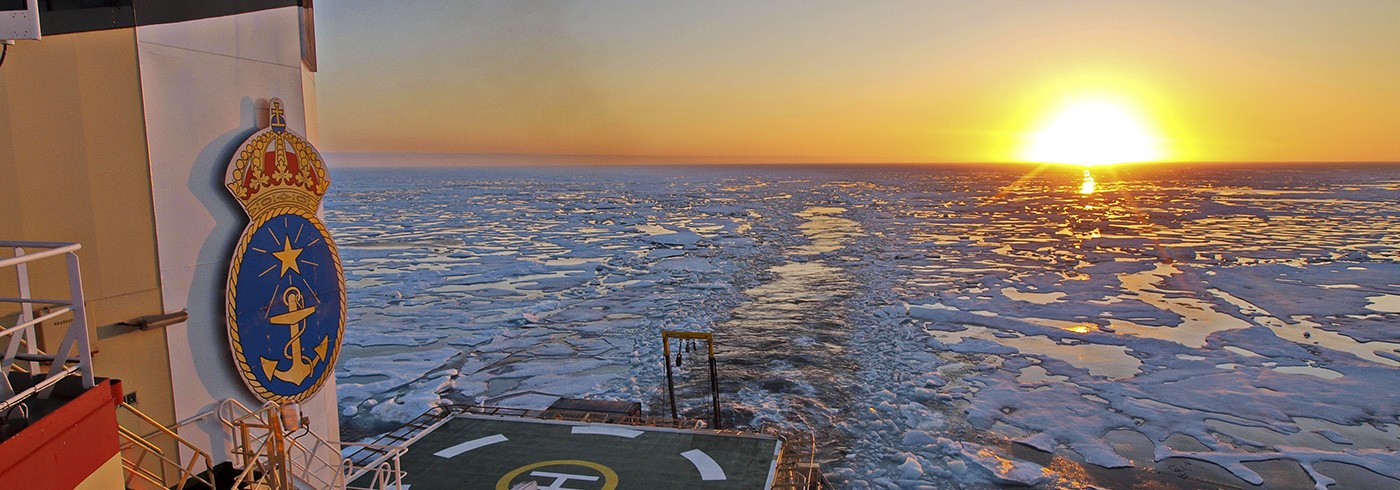The past and present state of the Arctic’s marine environmental system
20 August 2014 - 4 October 2014
Overview map of Leg 2 cruise track starting August 21 from Barrow, Alaska. The cruise ended in Tromsö, Norway, October 4. Working Boxes 1-5 are outlined with blue boxes. Red lines=Seismic reflection profiles; purple lines=Electromagnetic profiles; yellow stars=coring stations; green dots=CTD stations (some also included water sampling).
The Arctic Ocean and its coastal areas have undergone a suite of environmental changes resulting from warmer climate. Changes are seen in form of a declining trend in sea ice and larger open water areas where waves can build and increase coastal erosion. Inflow of warmer water masses from the North Atlantic into the Arctic Ocean has, among other things, been suggested to be a potential cause for freeing gas through disassociation of presently stable gas hydrates in the continental slope sediments.
The aims of SWERUS-C3 were to investigate the present and historical connections between climate, cryosphere and carbon (C3) in the East Siberian Arctic Ocean. Geological sediment coring and geophysical mapping was done during Leg 2 of SWERUS-C3 in order to study the history of Arctic sea ice, methane release, past and present bottom temperatures and the conversion and transport of carbon from the East Siberian shelf to the deep sea. Improved understanding of what changes in the Arctic marine cryosphere and carbon cycle may have on Earth’s climate system is needed in order to better understand what is happening to the climate today and to improve our ability to predict what will happen in the future.

Oden going through so called “pancake ice” at about 85°N towards the end of the SWERUS-C3 Leg 2. The light sea ice conditions implied that high quality geophysical mapping could be carried out along straight survey lines. Photo: Martin Jakobsson
While the main part of Leg 2 was carried out in international waters, a portion involved research within the Russian exclusive economic zone. High quality data were collected in all planned research areas. Ice conditions were light during the entire cruise and several of the target areas were only covered by 20-50% sea ice and some even sea ice free. The light sea ice conditions made it possible to carry the multibeam/sub-bottom profiling surveys out along optimal survey lines rather than in between ice flows. As a result of this we were able to collect seafloor mapping data with much higher quality than in any other expedition in the Arctic Ocean with icebreaker Oden. These conditions also enabled the research work to be completed one week earlier than planned, which made it possible to extend the research area further along the Lomonosov Ridge (figure 1). This improved one of the SWERUS-C3 goals; to connect continental shelf and slope environmental records with the deep central Arctic Ocean. It’s however clear that the data and sampling acquisitions during SWERUS Leg 2 will make large contributions to an improved understanding of the workings of the highly sensitive Arctic (paleo-) environmental system.



